Recent Publications
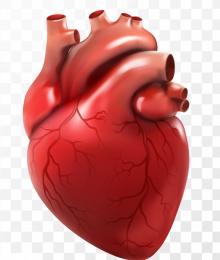
Or Tsafrir, Majdi Halabi: Acute myocardial infarction in the Covid-19 era: Incidence, clinical characteristics and in-hospital outcomes-A multicenter registry (PLoS One .)
We aimed to describe the characteristics and in-hospital outcomes of ST-segment elevation myocardial infarction (STEMI) patients during the Covid-19 era.
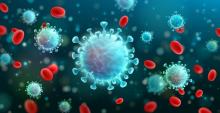
Daniel Glikman: Benign course and clinical features of COVID-19 in hospitalised febrile infants up to 60 days old (Acta Paediatr . )
Minimal data exist regarding the severity of COVID-19 in febrile infants under 60 days old. This multicentre prospective study explored the clinical course and outcomes of this hospitalised patient population, as, to date, the best approach has not been specifically addressed.

Baruch Weizman, Nili Golan, Ohad Ronen: Effect of socioeconomic status on survival in patients with head and neck cancer (Head Neck . )
The aim of this study was to assess the survival outcomes of head and neck cancer (HNC) by socioeconomic status.
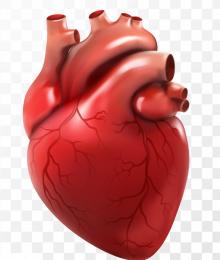
Ibrahim Marai: The Role of Affect as a Mediator between Coping Resources and Heart Rate Variability among Older Adults (Exp Aging Res .)
Heart rate variability (HRV) has been suggested as an indicator of capacity to adapt effectively to physiological or environmental challenges and of physical and psychological health in old age.

Khalaf Kridin: The Burden of Coronavirus Disease 2019 and Its Complications in Patients With Atopic Dermatitis-A Nested Case-Control Study (Dermatitis .)
The burden of coronavirus disease 2019 (COVID-19) among patients with atopic dermatitis (AD) is poorly understood. The aims of the study were to characterize a large cohort of COVID-19-positive adult patients with AD and to identify predictors of COVID-19-associated hospitalization and mortality.
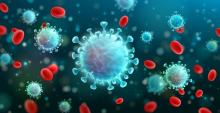
Amir Asher Kuperman, Daniel Glikman: COVID-19 in a Subset of Hospitalized Children in Israel (J Pediatric Infect Dis Soc .)
Most pediatric coronavirus disease 2019 (COVID-19) is mild. We assessed nationally severe COVID-19, including pediatric inflammatory multisystem syndrome (PIMS), in hospitalized children.
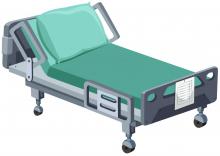
Marie Noufi Barohom: Case Report: Severe Hypocalcemic Episodes Due to Autoimmune Enteropathy (Front Endocrinol (Lausanne) .)
Autoimmune polyendocrinopathy-candidiasis-ectodermal dystrophy (APECED) is a rare monogenic disorder, associated with endocrine deficiencies and non-endocrine involvement. Gastrointestinal (GI) manifestations appear in approximately 25% of patients and are the presenting symptom in about 10% of them. Limited awareness among pediatricians of autoimmune enteropathy (AIE) caused by destruction of the gut endocrine cells in APECED patients delays diagnosis and appropriate therapy. We describe an 18-year-old female presenting at the age of 6.10 years with hypoparathyroidism, oral candidiasis and vitiligo.
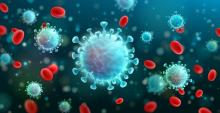
Avi Benov: Qualifying coronavirus disease 2019 convalescent plasma donors in Israel (Vox Sang .)
Passive immunization using investigational COVID-19 convalescent plasma (CCP) is a promising therapeutic strategy and could improve outcome if transfused early and contain high levels of anti-SARS-CoV-2 antibodies. We report the management of a national CCP collection and distribution program in Israel.

Khaled Khazim, Fedaa Ghanem: The Role of Vascular Lesions in Diabetes Across a Spectrum of Clinical Kidney Disease (Kidney Int Rep .)
The clinical-histologic correlation in diabetic nephropathy is not completely known. We analyzed nephrectomy specimens from 90 patients with diabetes and diverse degrees of proteinuria and glomerular filtration rate (GFR).

Andrei Braester: Difference between Japanese and White patients with acute pulmonary embolism (Thromb Res . )
Pulmonary embolism (PE) is a major health problem in the world, and the third most frequent vascular disease in the Western countries. The incidence rates of PE were reported to be lower in Asian countries than in Western countries; however, more recently, PE incidence has been on the rise in Asian countries and has become a common health problem. Racial differences, and distinct resource availability and treatment patterns may have notable implications in the presentation and outcomes of patients with PE. However, there is a scarcity of data on differences in the clinical characteristics and outcomes of PE patients based on their racial background. Therefore, in an international collaborative effort, we sought to compare the clinical characteristics, management strategies and clinical outcomes in Japanese patients with PE versus White patients.

Amir A. Kuperman, Vyacheslav Gurevich: Assessing the involvement of the placental microbiome and virome in preeclampsia using non coding RNA sequencing (J Perinat Med . )
Preeclampsia is a dangerous pregnancy complication. The source of preeclampsia is unknown, though the placenta is believed to have a central role in its pathogenesis. An association between maternal infection and preeclampsia has been demonstrated, yet the involvement of the placental microbiome in the etiology of preeclampsia has not been determined. In this study, we examined whether preeclampsia is associated with an imbalanced microorganism composition in the placenta.

Elizabeh Eshel, Dally Najib: Crizotinib acts as ABL1 inhibitor combining ATP-binding with allosteric inhibition and is active against native BCR-ABL1 and its resistance and compound mutants BCR-ABL1 T315I and BCR-ABL1 T315I-E255K (Ann Hematol .)
Resistance remains the major clinical challenge for the therapy of Philadelphia chromosome-positive (Ph+) leukemia. With the exception of ponatinib, all approved tyrosine kinase inhibitors (TKIs) are unable to inhibit the common "gatekeeper" mutation T315I. Here we investigated the therapeutic potential of crizotinib, a TKI approved for targeting ALK and ROS1 in non-small cell lung cancer patients, which inhibited also the ABL1 kinase in cell-free systems, for the treatment of advanced and therapy-resistant Ph+ leukemia.

Alexey Lazutkin, Alexander Izakson: Peripartum anesthetic management of women with SARS-CoV-2 infection in eight medical centers across three European countries: prospective cohort observation study (J Matern Fetal Neonatal Med .)
Several reports of obstetric anesthesia management have been published since the onset of the COVID-19 pandemic. We aimed to collect high-quality broad and detailed data from different university medical centers in several European Society of Anesthesiologist countries.
Lital Ashtamkar Matok, Maya Azrad, Tamar Leshem, Anan Abuzahya, Thanaa Khamaisi, Tatiana Smolkin, Avi Peretz: Mother-to-Neonate Transmission of Antibiotic-Resistant Bacteria: A Cross-Sectional Study (Microorganisms .)
We evaluated carriage rates of extended spectrum β-lactam-producing Enterobacterales (ESBL-E), Carbapeneme-resistant Enterobacterales (CRE), vancomycin-resistant Enterococci (VRE), and methicillin-resistant Staphylococcus aureus (MRSA) among pregnant women and determined the maternal-to-neonate transmission rates of these antibiotic-resistant bacteria (ARB).





